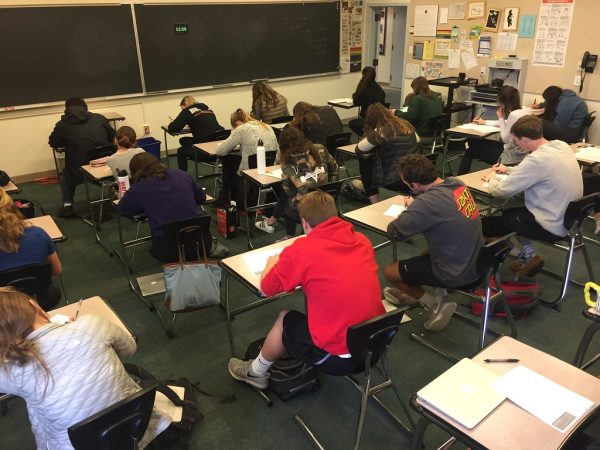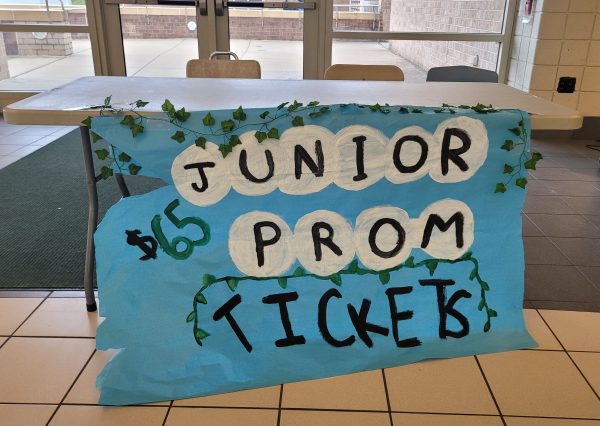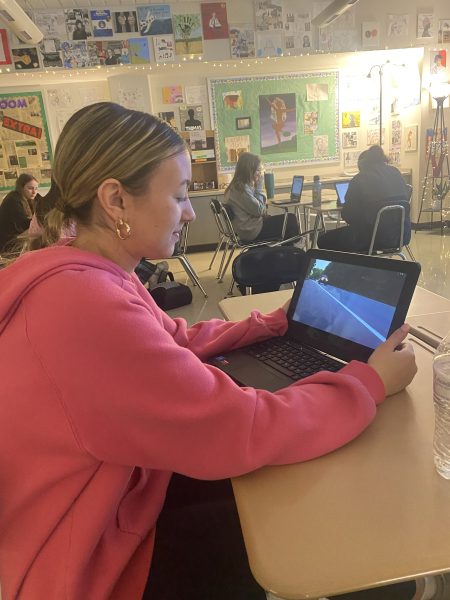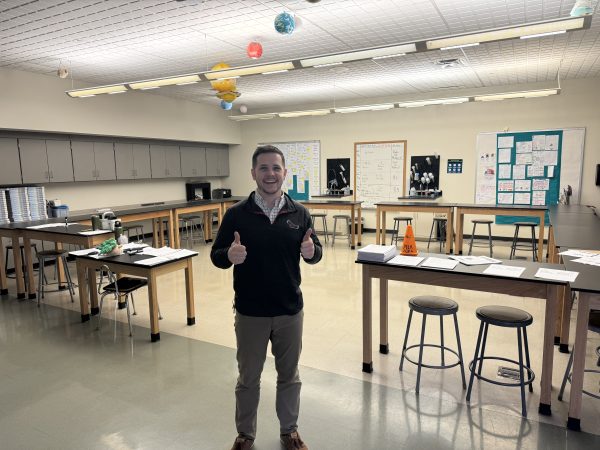Pros and Cons: Learning in School V. Remotely
Throughout the past year, schools have been adapting to all of the change that Covid-19 has brought, and this includes the now normal method of learning: virtually. Pennridge High School has offered multiple options of learning, including all remote learning from March 13, 2020, until the end of the 2020 school year. In August of 2020, the high school offered either hybrid learning, which entailed coming into the building two days a week to learn in person or full virtual learning. On February 22, 2021, the options switched for the students to choose to learn fully in person or entirely remotely. These adjustments have not been easy for students, teachers, administrators, or their families. Each style of learning provides its own pros and cons; which affect each student differently.
In-person Learning
Pros
- Students have a stronger ability to concentrate better, due to minimized distractions. According to Students4sc, “there are less opportunities to leave the class than when you are at home.”
- Students obtain a greater focus of attention from teachers when in the classroom. “In-person schooling also means more one-on-one teacher-to-student time than in an online setting”, says Students4sc.
- Students have an easier time building relationships and improved social skills while being surrounded by other students and teachers. Physically communicating in a room with others allows for students to develop increased skills that can help them later on in life in social settings.
Cons
- There is a possibility that students could be surrounded by negative influences, that they wouldn’t necessarily be exposed to in their own home. These behaviors and interactions may influence their character and grades.
- Students have a higher chance of being exposed to Covid-19 when going into the building to learn each day.
Remote Learning
Pros
- Students are in the comfort of their own homes, which can ease the pressure that comes along with going to school. Students may feel relieved to do their work in their own personal setting without worrying about others around them or their environment.
- Students have a decreased chance of being exposed to Covid-19 as they stay home each day rather than in a building with many other people. This keeps the students’ entire family in a safer state as well.
Cons
- According to Insidehighered, online school was, “Viewed as the least effective approach for learning and the least likely to prepare students for success in their job and career.”
- Students may struggle to feel socially connected to their peers and teachers, through the lack of physically being in school and learning through a screen instead. Harvard University explains that mental health issues may be on the rise for remote students after the disengagement from the classroom.
- Many students have lost their passion for schooling and future careers due to a loss of routine in everyday life. Patricia Perez, a child development specialist, explains that her 16-year-old son has lost interest in going to college, after dreaming of becoming a doctor for his whole life. The change to virtual learning caused her son to sleep increased hours throughout the day and become more isolated from his friends and family.
- Misconception between students and teachers. According to Potomac, 77 percent of teachers believe that online learning is just as good as traditional learning, if not better. Whereas, only 26 percent of students believe that they learn better virtually compared to in the classroom.
- According to Harvard Business Review, “for the typical student, taking a course online and not in person would decrease his or her grade by seven percentage points than if the student had taken it in person. This would mean that their GPA would be 0.3 less on the four-point scale if the class was taken for a whole year.”
- Students may lose their proficiency in integrity as they can easily cheat or use notes while taking assessments and this can also cause a decline in their studying skills.
Interviews with two Pennridge underclassmen proved the difference in learning between traditional schooling and remote learning. When asked why they chose to learn in-person this year instead of virtually, Maiah Mei McGowan replied, “because that is how school normally is and virtual learning did not seem like the better option.” There is definitely a normalcy to learning in school, as students have done before, which may allow them to feel more comfortable in this style. Allyson Lomax believes that the hardest part of virtual learning is, “finding the motivation to do my work.” Although Allyson is a virtual student this year, she claims that “I would prefer in-person learning because it is easier to follow along during class.” While each option comes with certain benefits and drawbacks, students will continue to adapt and find which style of learning suits their lifestyle best during unprecedented times.
Stephanie Gredone is in 12th grade. She is involved with choir groups, theatre, Mini-THON, NHS, and enjoys hiking or spending time with family and friends....









